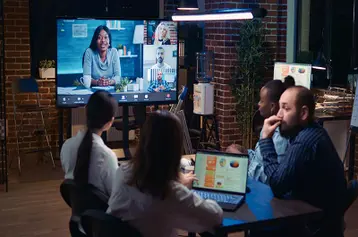Recently Posted

How to Communicate an Employee's Gender Transition Respectfully
Learn more about the importance of supporting transgender and transitioning employees, and ways companies can communicate a worker's gender transition respectfully.
March 19, 2024

Remote Work Culture
Building a strong remote work culture can help employers attract and retain top talent and boost productivity. Here's how to do it.
March 8, 2024

Black History Month: The Art of American History
Each year, Black History Month expands our views of tradition and enables us to continue striving to be part of a history that remains largely untouched. As entrepreneurs, you have the power to help preserve Black History and minimize the disparities that exists in the historical representations of people of color and the arts.
February 12, 2024

10 Creative Ideas for Your Office Thanksgiving Celebration
You don’t need to give your employees a full-blown feast to show how thankful you are for them and all they do. Read about Thanksgiving employee engagement ideas to successfully kick off the holiday season.
November 1, 2023
EGUIDE
A Startup’s HR Survival Guide
EGUIDE
Six Ways to Attract Top Talent









